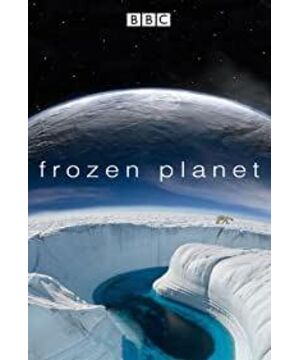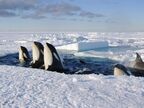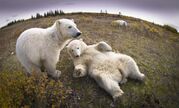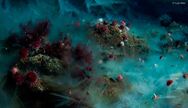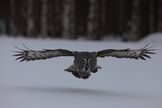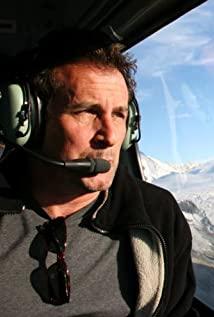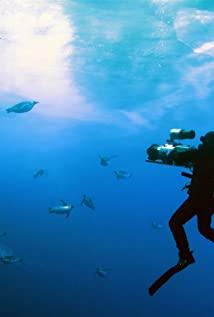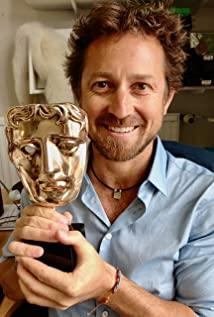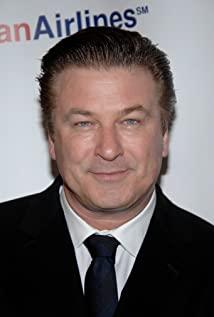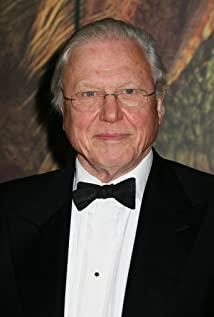l Introduction
The documentary "Frozen Earth", which took 5 years to produce on the British BBC TV station, was recently launched. This expensive documentary uses the lens to truly show the two poles of the earth that are gradually dissolving and the various creatures living here. The scenes in the film are breathtaking.
The documentary's narrator, Sir David Attenborough, said this may be the last chance humans will have to enjoy the sight before dramatic changes in Earth's climate. Sir Attenborough, 85, said: "This documentary captures many acts and phenomena that have never been recorded before. These images will become more and more precious as time goes on, because it is very likely that we A last chance to document these precious scenes. While the view of the Earth's poles was spectacular hundreds or even thousands of years before our arrival, much has changed in the last century than people realize."
The crew of "Frozen Earth" shot with special cameras that can work in low temperatures. This documentary, which took 5 years to come out, captures many precious images, showing the mysterious and fantastic side of nature: including the collapse of icebergs, the eruption of mysterious active volcanoes and these real natural phenomena, as well as rock peaks, beautiful and beautiful. Meltwater lakes and coniferous forests; in addition, these real pictures also show the cruel side of nature, where animals compete and kill each other, such as a male polar bear bravely repelling up to 10 rivals in love, covered in blood stains and The scars, and finally hold the beauty back. The documentary also often captures how some creatures work together to hunt prey, such as killer whales working together to hunt seals. With the help of high-tech equipment, the film crew also recorded the vast and barren land in the heart of the Antarctic continent, and the process of whales migrating to the poles.
The entire documentary is based on the change of seasons, recording various scenes of the earth's poles in a year, from the "big melt" spring, to the 24-hour summer when the light is shining, and then to the "big ice". The autumn that is sealed" ends with the long night of winter. The documentary concludes with some interesting adventures and tips for surviving in extreme cold and unpredictable weather.
l Notes
Episode 1 To the End of the Earth
"Frozen Earth" will take you to appreciate the bizarre landscapes of the earth's poles - the South Pole and the North Pole. The Antarctic and Arctic circles are the largest and least-recognized wastelands on Earth. In this icy world lives the strangest and most hardy creatures on earth.
The first stop on our journey was the icy Arctic Ocean, close to the North Pole. After 6 months of darkness, the sun is back. We stalked two courting polar bears who, surprisingly, also have a gentle side.
The next stop is the Greenland Ice Cap, where waterfalls plunge vertically into the heart of the ice and a giant iceberg bisects in the sea. Humpback whales join the largest flock of birds on the planet to hunt in Alaska's food-rich waters. To the south, the tree line marks the beginning of the coniferous forest, which is home to one-third of the world's trees. Here, 25 of the world's largest wolves hunt a massive bison.
On the other side of the world, the Antarctic Circle begins in the Southern Ocean, where countless penguins surf the sea, escaping from hungry sea lions. A group of orcas made a huge wave, trying to wash the seals off the ice floes. Diving under the ice, we found some prehistoric trolls - terrifying sea spiders and tidal worms the size of Western food plates. Above the ground, the top of Mount Erebus is a crystal clear cave, the southernmost volcano on Earth.
From here, we trace the footsteps of early explorers, like Scott and Amundsen, who aspired to be the first to reach the South Pole. The end of our journey is the hostile Antarctic ice cap, which contains 75% of the planet's fresh water and is the most ice-rich place on Earth.
Episode 2 Polar Spring (Spring)
After 5 months of darkness, the poles finally welcome the sun in spring. Warmth and life have returned to this magical world of ice and snow - and the biggest seasonal change on Earth begins.
Male Adelaide penguins come to Antarctica to build their nests. Only good nests can attract good mates, so male penguins must spare no effort to defeat their opponents! However, these early birds will be hit by some of the most violent snowstorms on the planet. In the Arctic, a polar bear mother hunts with her cubs. Inland, frozen rivers begin to melt, sending billions of tons of ice down the river, creating a magnificent polar spectacle. Melting river water nourishes the Arctic Ocean, feeding countless Arctic cod and narwhals. Fresh water entering the sea has accelerated the melting of sea ice - ice blocks the size of Australia will soon disappear from the Arctic Circle.
On land, the frozen winter moth caterpillars crawled out of the snow. Normally, caterpillars turn into moths after months of hatching, but the conditions here are so inhospitable that it takes 14 years for them to reach adulthood. Once adults, however, they have only a few days to find a mate and then die. Likewise, arctic wolves must race against time to raise their adorable pups before winter arrives.
In Antarctica, seabirds flock to South Georgia Island to join the perennial colonies of giant albatrosses and emperor penguins. Sea lions fight fiercely for their mates on the beach, which is populated by large numbers of animals.
Finally, the female Adelaide penguin escaped the killer whale all the way and came to Antarctica. Next, they will do the work of mating and feeding offspring.
Episode 3 Polar Summer (Summer)
It is midsummer now and there is no sunset. The hordes of animals who come here to cool off will put on a lifelong drama on this long, magical day. They use this short time to hunt, fight and feed their offspring.
Summer is a tough time for the polar bear family. Their ice world melts and the cubs take their first swimming lessons. Some bears save their energy by napping in the sun, while others defy the beaks of arctic terns to steal eggs from their nesting areas. In this frozen tundra, a larger-scale battle is taking place. A calf is besieged by a group of arctic wolves and is on the verge of life and death. A group of musk oxen rushed to save the calf. However, summer can also bring surprises, and 400,000 emperor penguins face an unexpected problem - the heat of summer. Adult penguins surf in the water, while fluffy little penguins can only cool off by rolling in the slush. Not far from the side, a male sea dog was ready to fight to the death with his opponent. The puppies tried their best to resist the powerful opponent, and the dog hair flew all over the sky.
Further south, a minke whale was hunted in an ice floe by a family of killer whales. The thrilling life-and-death chase lasted two hours, a scene never filmed. The killer whale kept torturing the minke whale, dragging it into the water in turns.
The funny-looking Adelaide penguins are back on time at the camp, which is home to about half a million penguins. The fluffy little penguins need constant feeding and protection as the thief-like skua hovers overhead. Once the little penguin is robbed, a melee will be staged in the air immediately.
Episode 4 Autumn
For polar animals, autumn means fierce battles and mass migrations. Time is running out—the Arctic Ocean is starting to freeze, and sea ice is spreading outward around Antarctica at a rate of 2.5 miles a day.
A large number of polar bears are guarding the Arctic Ocean coastline, waiting for the return of the ice. Soon, the polar bear's temper erupted, and a violent fistfight began. At the same time, 2,000 beluga whales are rushing to a special estuary, where they have to grind their bodies on the gravel to remove their skin - it's like a huge "whale hot spring".
Inland, the frozen tundra turned from green to fiery red. To defend their mates, male musk oxen smash each other's horns with the force of a 30-mph car collision. The young and lively male reindeer played a game of "hide and seek" in order to win the favor of the leader's mate.
In Antarctica, Adelaide's little penguins stay in a nursery, cuddling with each other. When the big penguin returned from fishing, the two little penguins started a funny obstacle race - unfortunately, there was only one serving of food, so whoever ran out and ate it. Two months later, the little penguin's feathers have grown, and the fluffy Mohican hairstyle before has disappeared. They're ready to go swimming, but reluctantly - penguins don't seem to like water by nature! A seal broke out of the water and dragged its prey down from an ice floe - a hunt that had never been filmed before. As winter approaches, the animals have all left. At this time, the giant emperor penguins came, and after a arduous journey, they came to the inland to breed their offspring. The mothers soon returned to the sea, leaving the fathers alone to look after the penguin eggs and endure the coldest winter on earth.
Episode 5 Polar Winter (Winter)
For polar creatures, nothing beats the ordeal of winter, with temperatures plummeting to minus 70 degrees and winds of 200 kilometers per hour. The whole area is covered in ice and snow, and it is dark, and only a few unusual creatures can survive.
A female polar bear arrives in the Arctic mountains to give birth as the first snowstorm hits. In the frozen Arctic Ocean, the rapids swept away a giant freeze in which the Icelandic eider lives. The arctic forest has turned into a magical world of ice and snow. There's a bloody, life-and-death battle between arctic wolves and bison, and alliances between crows and wolverines. Beneath the snow and ice is a group of winter survivors. Here, the little voles escaped the hunting of the big grey owl, but they could not escape the hunting of the ultimate hunter under the snow, the weasel.
In the middle of winter, a male polar bear roams a dark and empty ice field. Beneath the ice and snow, the little polar bear lies in the ice cave; above the ice and snow, the northern lights light up the entire sky. In Antarctica, male emperor penguins are at risk as they try to protect their precious eggs from violent polar snowstorms. Weddell seals take refuge in a crystal clear world of coral reefs and bizarre creatures, but the cold follows, and countless icicles hang down here, threatening their lives at any time.
The sun finally came back, and at this time the female emperor penguin also dragged its chubby body back. They want to feed their precious babies their first treats. After surviving the winter, the snow family is off to a good start in raising their offspring. Adel penguins swarmed back, and the ice-water junction was full of life again. At this time, male emperor penguins can finally return to the sea.
Episode 6 The last frontier
For thousands of years, it is the treasures and wonders of the polar regions that have attracted people to come. Today, people's survival here not only depends on ancient wisdom, but also requires advanced science.
The vast majority of arctic inhabitants live in Siberia, either in cities like Norilsk or in the outlying frozen tundra, and like the Dorgan tribe, they live a nomadic life by raising reindeer. At the seaside, some traditional people still use boats to catch walruses to make a living. It's a very dangerous job, but once a walrus is caught, it's enough to feed a family for a few weeks.
What attracts people to settle here today is the abundance of minerals: the Danish army claims Greenland's mines and has a massive dog sled patrol that patrols 2,000 miles of coastline in winter. In the air, the spectacular Northern Lights can interfere with power transmission, so scientists constantly monitor the Northern Lights while launching rockets into the sky, releasing a gorgeous cloud of smoke 100 kilometers above the ground.
In contrast, Antarctica is remote and cold, and it wasn't until a century ago that humans first explored the continent. Colonel Scott's cottage still stands like a monument. Today, only science is allowed here: remotely piloted submarines dive into the ice to discover new creatures that also exist in a labyrinth of ice caves in the crater of an active volcano. Above the ground, giant balloons rise into the pristine air to detect cosmic rays.
In Antarctica, humans have also established a research base that can withstand the harshest winters on Earth. The base can be isolated from the outside world for 6 months, it is completely self-sufficient, and it even has a greenhouse inside.
Episode 7 On thin ice
The documentary The Melting Frozen Planet exclusively explores the impact of climate change on people and animals in the polar regions, and what it means for humanity as a whole.
The program uses the world's most cutting-edge aerial photography and slow-moving technology to tell people with a large number of shocking images: The impact of global warming on the polar regions is faster and faster than the impact on other places on the earth. strong.
Mr. David Attenborough, a world-renowned biologist and senior producer of the BBC, serves as the narrator of the film, using his in-depth descriptions to take you into the mysterious polar world.
l Short Comments
Lao Tzu said, "Everyone in the world knows that beauty is beauty, and it is evil. Everyone knows that good is good, and it is not good." Since its birth, human beings have lived in a greenhouse with orderly social order, but they do not know that the two ends of the vast planet, There is such a mysterious and unknown world.
In this unknown environment, there will be no mercy, no sympathy, and when you lose the ability to live alone, there is almost only a dead end. To die or to live is not a beautiful choice. All creatures need tireless natural selection to have the opportunity to live beautifully.
The seals lie on the ice and are teased by the killer whales and then ruthlessly devoured, the little polar bears may be eaten by their hungry fathers, the female polar bears can only be mothers and have just nursed the little bears alone, and the bison that cannot keep up with the group will be hunted by the wolves Kill, blood dripping. The teamwork of killer whales, the mating of polar bears, the migration of penguins, and the situation in the deep sea all remind us that in this trivial, boring, painful, boring human world full of desire and disappointment, there is so wonderful and so indifferent. Other related creatures are fighting for their survival.
All things are animistic and beautiful, and we are but one of them. Being in the earth's greenhouse, we must always remind ourselves that human beings are small and the individual inside is just a speck of dust.
View more about Frozen Planet reviews


